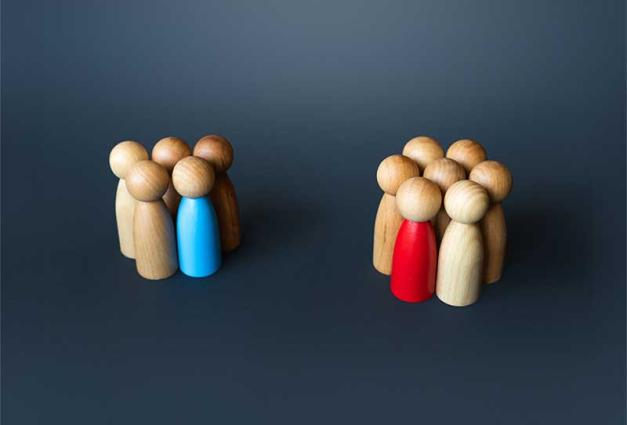On November 2, 2020, polls strongly suggested that Donald Trump would lose the 2020 election. In fact, it does look like Joe Biden is about to be inaugurated. And he won by more than 7 million votes. On the other hand, Trump lost by a smaller margin than many experts predicted. But if Trump was widely predicted to lose, why did so many Americans believe he’d be reelected? And why are so many now claiming we must "stop the steal"?
One answer is that when we predict the future, we rely on a handful of intuitive rules of thumb for making snap judgments. These rules—these heuristics can bias our decisions by overweighting what we remember and what we are currently experiencing rather than what pollsters tell us. Here are five heuristics (or judgmental biases) that help explain why so many Americans thought Trump would win—and why some refuse to believe he lost.
Availability. Judgment by availability means that our judgments are strongly affected by things that stick in our memory and come easily to mind. Most people overestimate murder rates because murder gets a lot of media attention. Likewise, most people overestimate their risk of dying in shark attacks and train wrecks—each of which is much more memorable than probable. Whether you think of Trump as a shark or a train wreck, he is definitely memorable. As Americans heard Trump’s claims that he would win—and recalled that he did so in 2016—this made many people think that 2020 would be an encore.
Representativeness. We also predict future events based on how well these possible events resemble events that happened in the past. Trump won in 2016—even when he was behind in the polls. The 2020 election resembled the 2016 election in many ways. There were debates. There were concerns about the economy and social justice. In 2016, there was no COVID-19, but COVID-19 exaggerated the political divide that defined the 2016 election. There were even Supreme Court controversies during both elections. To many Americans, this election strongly resembled the last one. This made many people think that Trump would win again.
Anchoring and Adjustment. When making judgments, we often update our conclusions as we gather new information. But when doing so, we tend to stick too close to our judgmental starting points—our anchors. Where we begin has a disproportionate effect on where we end. Amos Tversky and Daniel Kahneman first showed this phenomenon when they gave high schoolers five seconds to estimate the answer to a math problem. For some students, the problem was 8 x 7 x 6 x 5 x 4 x 3 x 2 x 1. For others, it was 1 x 2 x 3 x 4 x 5 x 6 x 7 x 8. Students who got the first problem gave much bigger estimates. This is because they began with anchors like 56 (8 x 7) or 336 (8 x 7 x 6) rather than 6 (1 x 2 x 3) or 24 (1 x 2 x 3 x 4). People usually stick too close to their judgmental starting points. Many Americans began their projections of the 2020 election with Trump’s win in 2016. Many presumably could not get this old outcome—this anchor—out of their heads.
Numerosity. Another seductive rule of snap judgment is numerosity. We count. Counting can be highly useful. Five apples usually make more applesauce than three. But very often, the things we count, whether they are pizza slices or electoral college votes, are not identical. In 2020, Trump won 30 states, and Clinton won 20. Further, many of the states Trump won were geographically large. Consider Alaska and Texas. The 2016 electoral college map was very red. But most of the states Trump won had more prairie than people. Of course, the electoral college system was still in force in this election. But this time around, Biden’s team apparently did a good job of wooing voters in swing states.
Egocentrism. Another basic property of human judgment is egocentrism—being judgmentally self-centered. This bias comes in many forms, and it affects people of all political stripes. We weigh our own personal experience much more heavily than we weigh hard data. The “echo chambers” of social media only magnify this natural human bias. Of course, this bias made some Democrats believe Biden would win in a landslide, which he did not do. But it also made many Trump supporters think Trump would surely win. After all, Facebook, people’s siblings, and even Google were feeding them information that supported their existing views. Both on the web and to the 180 students I was teaching this fall, I publicly gave Trump only a 10% chance to win. In retrospect, I was egocentric and underestimated his chances. The fact that I study both egocentrism and judgmental bias did not fully protect me from it.
This all matters. It is part of the reason why so many Trump supporters refused to accept the results of the election. If we are to move forward as a nation in 2021, we will all need to engage in greater judgmental humility—and make much more of an effort to see how the other side views the world. From raising the minimum wage and stopping gerrymandering to making it easier for struggling students to pay for college, areas of political agreement between conservatives and progressives are out there. We just need to look harder for them.
For Further Reading
Kahneman, D. (2011). Thinking: Fast and slow. Farrar, Straus, and Giroux.
Pelham, B. W., Sumarta, T. T., & Myaskovsky, L. (1994). The easy path from many to much: The numerosity heuristic. Cognitive Psychology, 26, 103-133. https://doi.org/10.1006/cogp.1994.1004
Brett Pelham is a professor at Montgomery College, Maryland who studies social cognition, including judgment under uncertainty. He is also a former associate editor at Character and Context.




